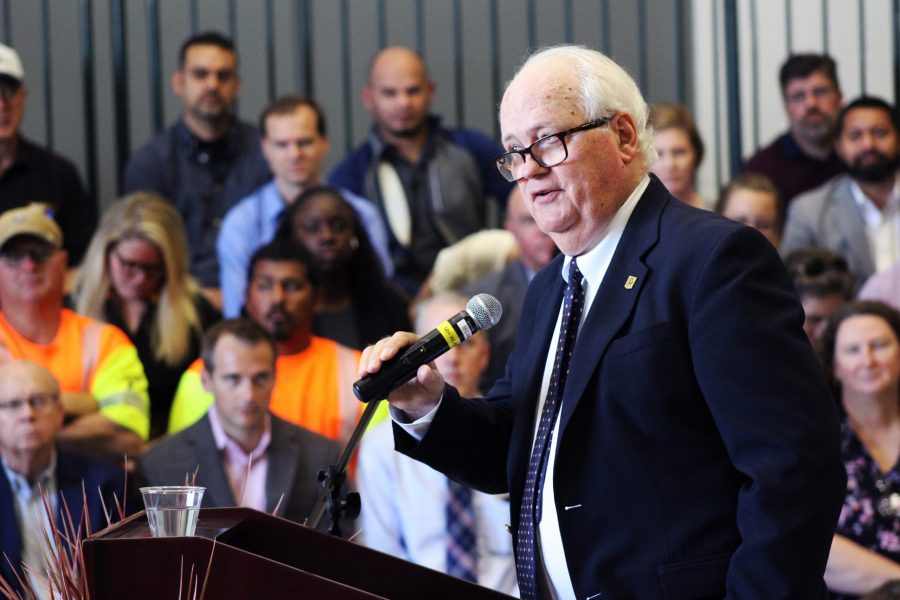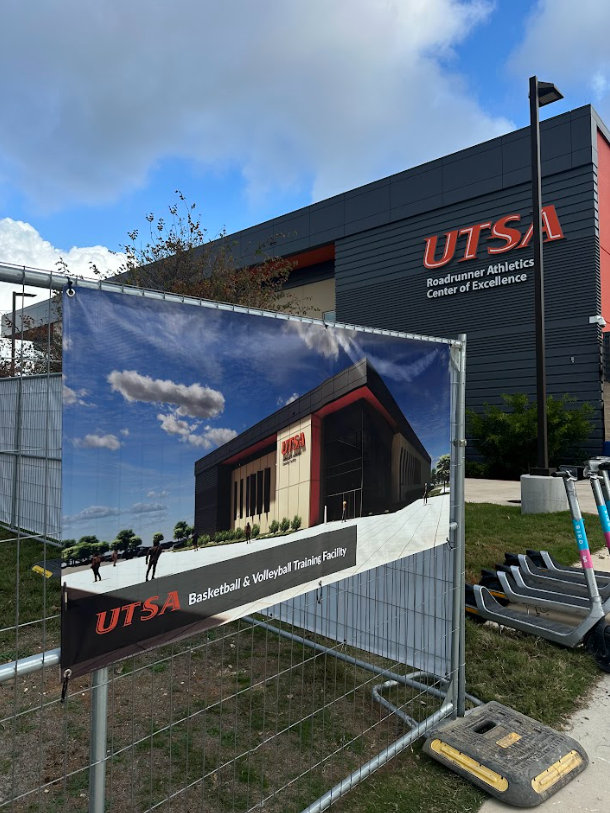UTSA’s College of Engineering held a ribbon cutting ceremony for the grand opening of its new Large-Scale Testing Laboratory on Oct. 3. The lab will facilitate researchers as they begin developing new earthquake-resistant building technology.
This technology called periodic cellular materials (PCMs) would be installed inside of buildings to withstand the impact of earthquakes by altering its structure, and, after a quake, return to its original structure. The goal for this technology is to reduce the damage caused by earthquakes.
Currently, materials used in earthquake-resistant buildings deform but do not rebound afterwards, thus making those structures weaker over time.
“In our lab, we can fabricate PCMs in a broad range of materials like ceramics, polymers, metals or a combination of these. The characteristic properties of our PCMs are mostly influenced by the connectivity of the cells that form the materials,” Dr. David Restrepo, assistant professor in the department of mechanical engineering, said.
PCMs would offer a more flexible and lighter alternative to the steel used in building construction. The energy released from an earthquake would be dissipated as it goes through the walls of a skyscraper.
“We found an alternative that helps dissipate similar levels of energy that when ‘damage’ is used, but in this case, all the deformation is reversible. In other words, no apparent damage is caused in the structures. Then the buildings can be safely occupied after an earthquake, there is a reduction in casualties, and there is an improvement in the longevity of the buildings,” Restrepo said.
Restrepo believes PCMs can also be used for natural disasters other than earthquakes. For example, Texas rarely experiences earthquakes; however, PCMs can be used to protect buildings from more common hazards like hurricanes and windstorms.
Funding originated from the UTSA Office of the Vice President for Research, Economic Development, and Knowledge Enterprise which provides grants to small research projects.
“We hope by next to year finish researching some early prototypes. We would like to see this in the application soon and start saving lives,” Restrepo said.







